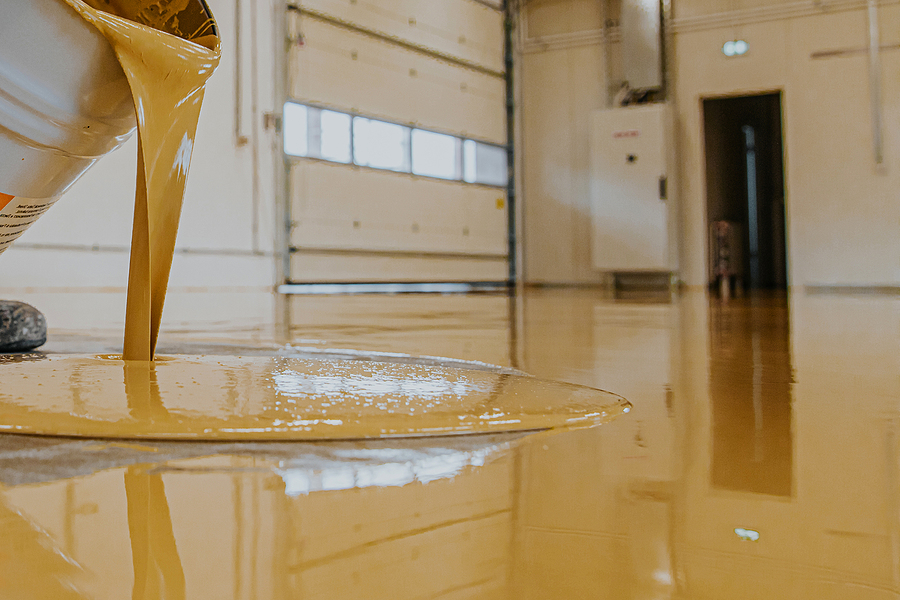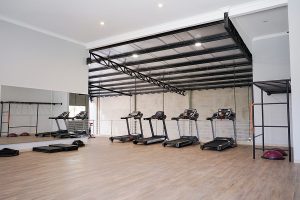In real facilities, “chemical resistance” isn’t one thing; it’s how a floor system holds up to specific chemicals, concentrations, temperatures, and exposure types (splash, spill, or full immersion). Getting chemical resistance in industrial epoxy application right means pairing the industrial epoxy coatings you choose with the way your plant actually runs.
What “Chemical Resistance” Really Means
Resin manufacturers and standards bodies test coatings against defined liquids and conditions, then report visible and physical changes (softening, discoloration, blistering, weight change). Common protocols include ASTM D543 (immersion of plastics/coatings in reagents), ASTM D1308 (spot tests of household/industrial chemicals on finishes), and ISO 2812-1 (immersion resistance for paints and varnishes). These methods create apples-to-apples data you can use to compare systems.
Across many product lines, epoxies are positioned as the high-chemical-resistance workhorses for acids, alkalis, oils, and solvents; urethanes (including cementitious urethane) are often specified for abrasion and thermal shock, with epoxies carrying the load for harsher chemical contact in many dry or splash/spill environments.
Manufacturers publish searchable chemical resistance charts so you can check a system against your actual chemicals and concentrations before you spec.
Matching Epoxy Chemistries to the Job
Not all epoxies are the same. For example, novolac epoxies (a tighter crosslinked network) are frequently chosen when exposure involves stronger acids/solvents or higher temperatures, including secondary containment and process areas. Product families and application guides call out these use cases explicitly.
When constant hot caustics, organic acids, or steam cleaning enter the picture, many facilities combine technologies, for instance, using a novolac epoxy in containment and specifying urethane-cement in zones with repeated thermal shock, because each chemistry excels under different stresses. Supplier data and system selectors reflect these patterns.
Exposure Type Matters (a Lot)
A floor that shrugs off intermittent splashes can still fail in immersion. Industry practice distinguishes:
- Splash/Spill/Intermittent Contact: Many high-build epoxies perform well here at the right film thickness and cure. Always verify with the manufacturer’s chart for your specific chemicals and temps.
- Continuous Immersion/Containment: Selection follows different rules (lining-grade epoxies, novolacs, or specialty systems) and is guided by NACE practices for coatings over concrete in chemical immersion service.
Temperature accelerates attack and permeation, so the same chemical can go from “resistant” at ambient to “not recommended” when hot, exactly why charts and lab data specify time and temperature.
Why Surface Prep and Profiling Dictate Outcomes
Even the best resin fails on a poorly prepared slab. NACE No. 6/SSPC-SP 13 defines how to prepare concrete, sound, dry to spec, free of contamination, and profiled to the correct Concrete Surface Profile (CSP), before installing chemical-resistant systems. Proper repair of cracks/joints and meeting moisture criteria are table stakes for adhesion and long-term chemical performance.
Reading the Charts: How to Use Manufacturer Data
Try this practical workflow:
- List your exposures: chemical name, concentration, temperature, and whether it’s splash, occasional puddling, or immersion.
- Check the exact product family in the vendor’s chemical resistance tables, not just “epoxy in general.” Look for the rating for your conditions.
- Confirm film build and cure: many resistances are only valid at minimum dry film thickness and after full cure.
- Ask about novolac options (or linings) if your list includes strong acids/solvents or high heat.
Typical Selections by Environment
- Bottling, packaging, general manufacturing (oils, cleaners, alkali washdowns): high-build epoxy system rated “Excellent/Good” for listed reagents; urethane topcoat for abrasion where UV isn’t critical.
- Chemical storage/secondary containment (acids, solvents): novolac epoxy lining or broadcast system validated for immersion or long dwell; verify temperature.
- Food & beverage with hot caustics/lactic acid + thermal cycling: use epoxy where chemical resistance is paramount and urethane-cement where thermal shock/wet cleanup dominate; many specs blend both.
Testing and Verification
If your mix of chemicals is unusual or critical to uptime, request coupon testing to ASTM/ISO methods at your actual concentrations and temperatures. ASTM D543 and ISO 2812-1 immersion protocols, plus spot-tests like ASTM D1308, let you validate a short list before mobilizing.
Bottom Line
Strong chemical resistance comes from choosing the right epoxy chemistry for the exposure, installing over properly prepared concrete, and verifying performance against the exact chemicals, concentrations, and temperatures you face. To achieve effective chemical resistance in industrial epoxy application, use manufacturer charts for first-pass selection, escalate to novolac or lining-grade systems for tougher immersion, and involve standards-based testing when the stakes are high. Done right, industrial epoxy coatings protect your slab, cut downtime, and stretch maintenance cycles.
Need help mapping your chemicals to the right system? The team at Custom Concrete Prep & Polish will profile your slab, review your SDS list, and specify a warrantable coating stack for your exact exposures. Request your quote today.



